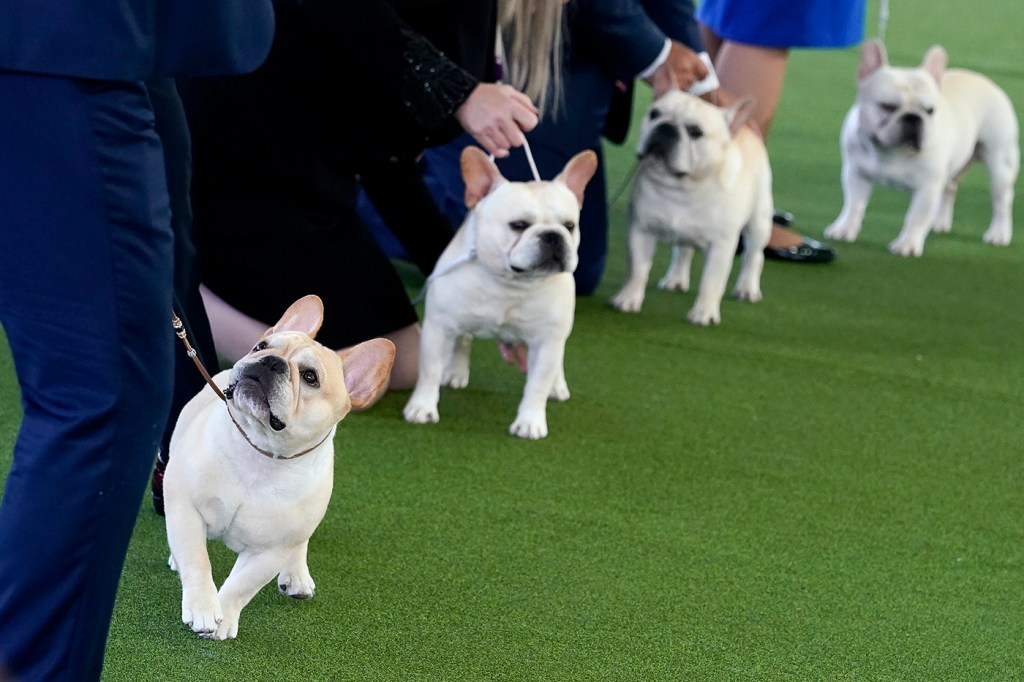Should ‘extreme breeding’ of dachshunds and French bulldogs be banned? ‘Not pleasant to be a pug in many ways’

Nothing says canine cuteness like a smush-faced French bulldog. Unless it’s a dachshund toddling along on short little legs.
But animal welfare advocates in the U.S. and Europe say there’s nothing appealing about hearing a French bulldog labor to breathe or seeing a dachshund struggle to walk on its hind limbs.
They are pushing to ban breeding practices that result in poor health conditions for dogs — and big veterinary bills for their human owners.
In New Hampshire, legislators recently tabled a bill that would have made that state the first in the nation to prohibit the breeding of dogs that have a physical trait — in this case, being short-nosed — that “causes suffering.”
In Germany, an animal welfare act proposes a ban on “cruel” breeding of dogs that creates musculoskeletal anomalies causing them to live in pain.
Editor’s Picks
‘Owners get used to it’
Northeastern professor Mark Wells says restrictions could work as long as they push breeders away from a “narrow fixation” on traits they believe make dogs more appealing but are actually harmful.
“I don’t know if anyone is breeding to hurt the animal,” says Wells, an assistant professor of philosophy whose research includes political protection for animals.
“But owners get used to it when every breath their French bulldog takes is labored,” he says.
Bulldogs and other flat-faced breeds can have wheezy, loud, labored breathing from brachycephalic obstructive airway syndrome. Bred to have shortened skulls and muzzles, they retain soft tissues in their mouths that obstruct breathing and can require life-saving surgery.
“It’s not pleasant to be a pug in many ways,” Wells says.

Dachshunds, which are also known as the “sausage dog,” may also require surgery for relief from what could be life-long discomfort associated with their long and low body type, according to the British Veterinary Association.
The association says intervertebral disc disease tops the list of problems associated and can interfere with the dachshund’s ability to walk.
“From a philosophical angle, we’re worried about animal welfare, and breeding seems like a major cause of a lot of animal suffering,” Wells says.
“The ethical problem with dog breeding is we’re not seriously entertaining the suffering we are creating in the world. We could have bred these dogs differently.”
Pushback from kennel associations
Kennel associations pushed back, hard, against the proposed animal welfare regulations.
The American Kennel Club called proponents of a bill proposing civil penalties for knowingly breeding dogs with serious breathing issues “extremists.”
The AKC said the bill was tabled March 28 after failing to meet a legislative deadline.
The German Kennel Club claimed the new animal cruelty regulations would result in a ban on dachshunds and launched a petition to “save our favorite dogs,” which German government officials denied.
“They aren’t trying to ban dachshunds,” Wells says.
“Basically, they are trying to guide these breeding practices away from the promulgation of these traits that cause suffering.”
“They are not trying to ban dachshunds, unless you think a dachshund has to be a thing that suffers,” Wells says.
Germans call it ‘torture breeding’
Wells says Germany, Switzerland and Austria have a word, qualzucht, that translates as “torture breeding.”
“There’s been a concern in these countries for a long time about breeding practices,” he says.
Popular demand drives breeding for extreme traits, and it has only become worse over the decades, says Northeastern assistant psychology professor Terri Bright, who is also a clinical behaviorist at Angell Animal Medical Center.
“Dog breeds from 100 years ago look so different from dogs now. Boxers look different. They had noses. They don’t anymore. Dachshunds had longer legs. Bassetts had longer legs,” she says.
“German shepherds are now walking on their hocks. Why isn’t anyone talking about that?” Bright says.
Are bans the answer?
Dog shows help popularize certain breeds, she says. Bright says what started out as trials of ability in agricultural shows has become “a talent and beauty show.”
But Bright questions bans on breeding practices and says it’s up to pet owners to select responsible breeders.
“Who is going to measure the nose?” she asks, adding she questions what happens to dogs the bans consider deformed. “Do you drown them? Do you give them away?”
Imagining a healthy breed
Dog competitions fire people’s imaginations and tell breeders what to breed for, be it a cute flat face, shortened legs — or the dwarfism of his own adorable Corgi, Wells says.
“We breed dogs to fit our imagination rather than merely categorizing the dogs we happen to have into breeds. And that’s why changing our imagination is so important for this issue,” he says.
Wells says it’s possible that bans, restrictions or even education can guide people away from creating deformities in the breeding process.
“Can we imagine French bulldogs without labored breathing?”










